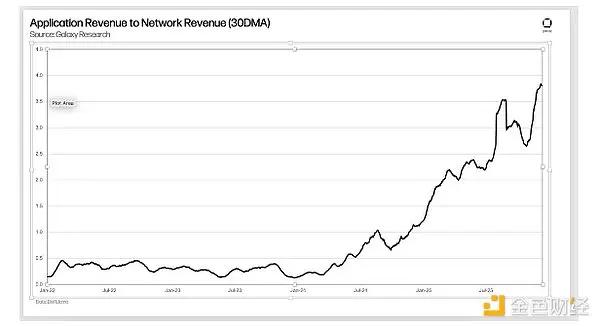Author:MONK
Compiled by: TechFlow
(This article summarizes the key points of the latest Messari report.)
Recently, the discussion about whether Memecoins will "disappear" and whether this will plunge Solana into difficulties has been intensifying. Next, I will use data to answer your questions.

Since the $LIBRA incident, the trading volume of Memecoins on Solana has dropped to the lowest level so far this year.
However, it should be noted that the current trading volume is still higher than the level at the beginning of 2024, which does not mean that Memecoins have already withdrawn from the historical stage.
What I really want to emphasize is the extent to which Solana's economy depends on the support of Memecoins.
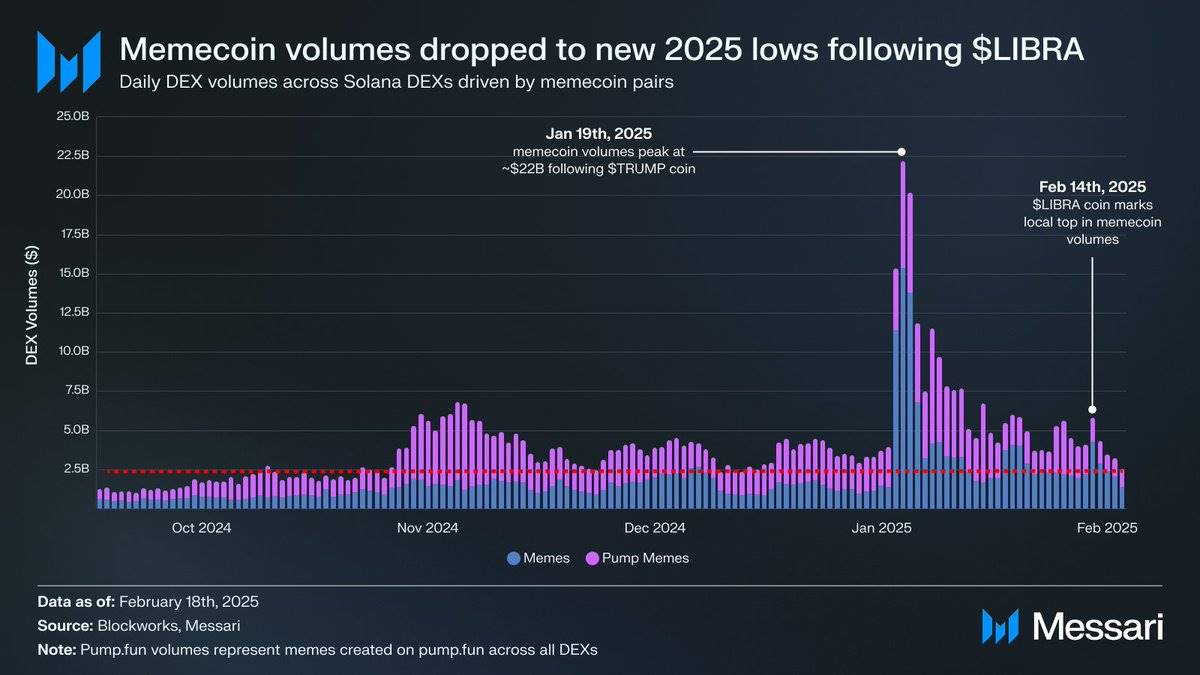
Solana's Economy Depends on Memecoins: Risks and Current Situation
Solana's economy is essentially driven by transaction volume.
If we observe the leading applications on Solana ranked by revenue, we will find that these applications are almost all protocols that promote trading activity in some way.
This can be verified by the strong correlation between daily DEX trading volume and application revenue.
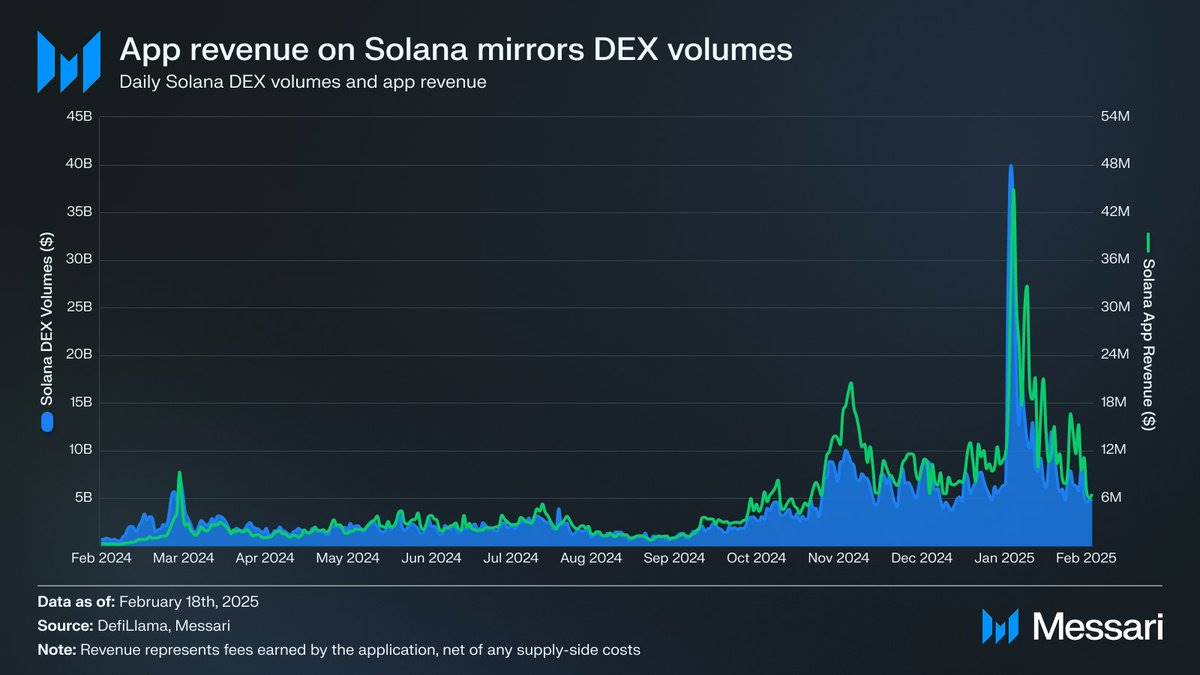
This pattern is not uncommon in today's high-throughput blockchains. For example, Base's economy also largely operates on the basis of transaction volume.
In contrast, Ethereum's mainnet revenue comes more from applications driven by total locked-in value (TVL), such as lending and mining rewards, mainly because transaction activity on the mainnet has already declined significantly.
However, it is worth noting what the core factors driving these transaction volumes are.
On Solana, a large amount of trading activity comes from Memecoins.
But worryingly, the proportion of Memecoin trading volume has become abnormally high. For example, in February 2025, Memecoins accounted for 70% of the total DEX trading volume on Solana.

In contrast, Solana's competitor Base is gradually moving away from its dependence on Memecoin trading volume, shifting towards more project tokens and trading pairs denominated in mainstream assets:
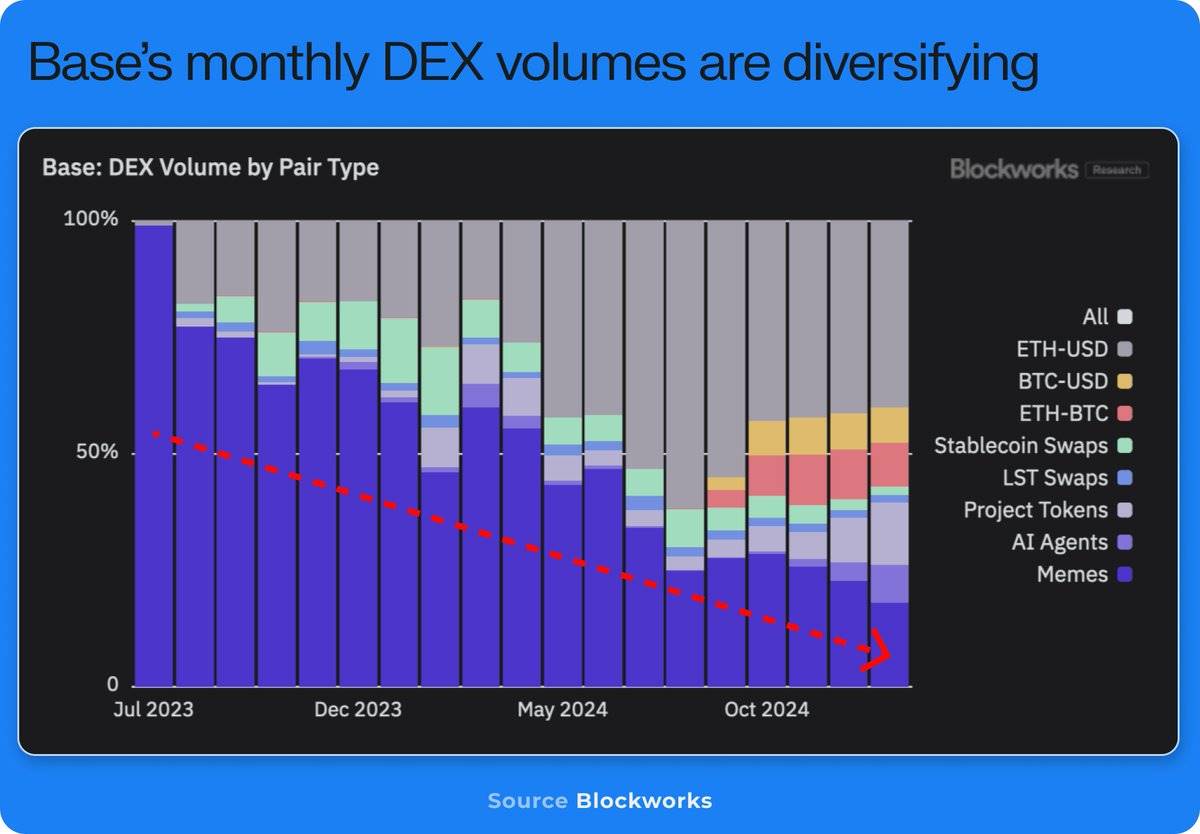
Why is this a problem?
First, Solana's Memecoins are highly volatile, and the sustainability of these Memecoins is still in question.
More importantly, researchers, investors, and the Solana Foundation have been emphasizing the growth of application revenue and "on-chain GDP". Solana's application revenue has indeed grown rapidly and is still one of the best indicators of user activity.
However, when we delve into the main sources of this revenue, we find that the most profitable businesses on Solana are actually dependent on Memecoins for profit.
For example, the two highest-revenue areas on Solana are Telegram trading bots and Launchpads (such as pump.fun).
These two areas collectively contribute more than 60% of Solana's application revenue, with an annualized revenue of over $3.3 billion.
The core of these businesses is Memecoins.

The interdependence in Solana's application economy further exacerbates the risk of Memecoin trading volume.
For example, Pump relies on Raydium, Raydium relies on Jupiter, then Photon and Jito.
This means that a single Memecoin transaction can generate revenue for five different applications simultaneously.
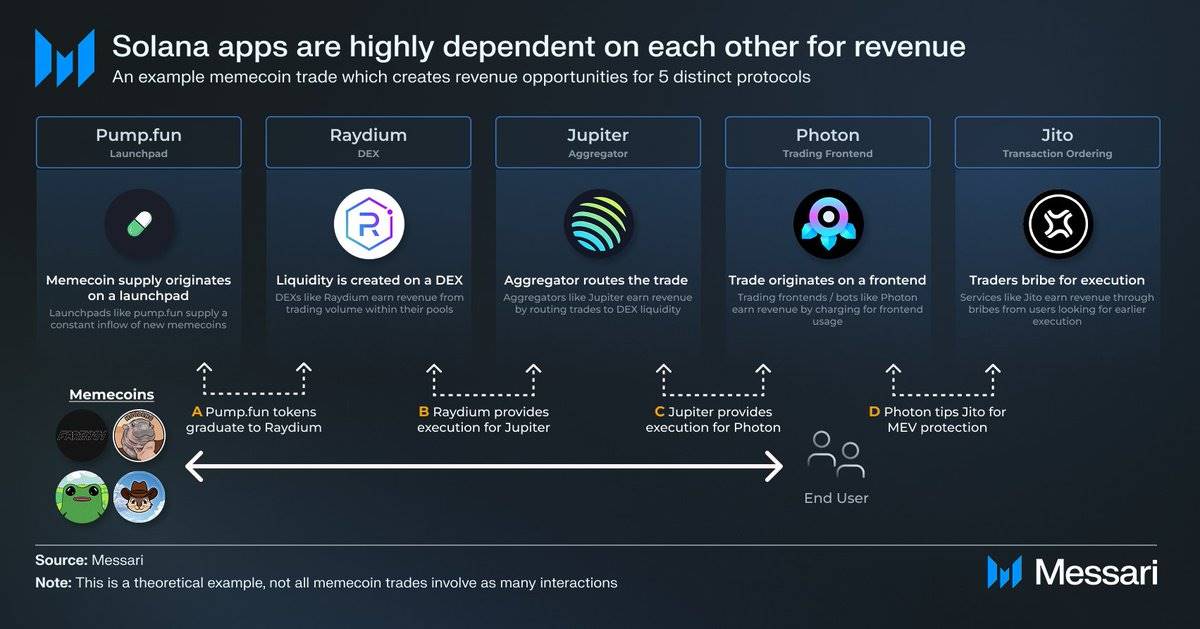
Therefore, these applications that appear to be independent businesses, their revenues are actually largely interdependent.
However, this cross-sector revenue is built on the foundation of the current 50%-70% of trading volume coming from Memecoin activity.
From the perspective of the blockchain, Memecoins themselves are not a problem. For Solana, this phenomenon is a natural result of its early lead in low-cost block space and on-chain user experience (UX).
Blockchains should be neutral to the types of activities by nature.
Building an ecosystem around Memecoins is profitable, so many protocols have seized this opportunity.
In the future, other asset classes, such as decentralized IoT networks (DePIN), real-world assets (RWAs), stablecoins, and mainstream assets, may gradually replace Memecoin trading volume.
But for now, it is not an exaggeration to say that Solana is a "Memecoin economy".
This also means that if Memecoin trading volume experiences a significant contraction, it may trigger a chain reaction of revenue declines.
Why is this important?
Solana's development narrative has always revolved around the growth of key metrics, and these metrics have also provided support for the performance of the $SOL asset.
But in reality, these metrics are highly dependent on the Memecoin domain, which has strong reflexivity (i.e., changes in trading volume can amplify market volatility).
If we use these metrics to assess Solana's progress, the collapse of Memecoin trading volume could turn a "growth story" into a "rebuilding story".
This would lead to a sharp shift in market sentiment, and it may take a relatively long time to restore these economic activities.
Of course, Murad's view may be correct. If so, then ignore the above concerns.
In the long run, I remain optimistic about Solana's ecosystem. But in the short to medium term, if the demand for Memecoins cannot be sustained, Solana's economy may face certain challenges.




